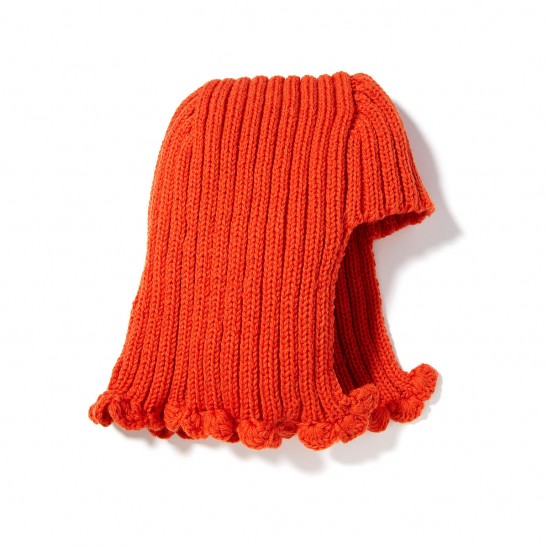Rocks don’t seem very fast, what with their lack of mobility and all. But they simply don’t let that stop them. The largest rocks on earth—our tectonic plates—move at cruising speeds reaching 2 inches per year. And falling rocks can really pick up speed, of course, as they accelerate at a rate of 32.174 ft/s2. In contrast, it has been much more difficult to calculate the speed of the mysterious sailing stones in Death Valley National Park. These rocks, ranging from pebbles to slabs weighing hundreds of pounds, are found scattered around the parched, dirt surface of the Racetrack Playa with what appear to be skid marks behind them, tracing a path hundreds of feet long and not always in a straight line. While these tracks have been observed for at least a hundred years, the rocks’ movement only occurs every few years, and it has never actually been observed by humans. Until 2013. In December of that year, some researchers used time lapse photography and GPS tracking, and were able to document the movement of 60 different stones. It turns out that, under certain winter conditions, a sheet of ice just millimeters thick that forms on the ground, providing a low-friction surface across which stones can slide when blown by the wind—moving up to 200 meters in a month.
 Humans aren’t the only species that delights in delivering unexpected little surprises to the ones they love. Anyone with a cat is probably well aware of this fact. Dropping its prey for you to find later on your doorstep is an act of generosity—like delivering a furry fruitcake for you to nibble on. But such generosity is not limited to domesticated animals. A 2007 study showed that rats who had been helped by other rats were likely to “pay it forward” when they saw another rat in need. The males of some species of spider woo their mates by offering delectable treats wrapped in silk. (Although some male spiders can be a real Grinch, and trick the female by wrapping up something completely inedible, like seeds, prey that he has already eaten, or a fruitcake.) Vampire bats are known to share blood with the less fortunate who were unable to find prey during their feeding hours. But perhaps the sweetest gift of all is the gift of cyanide, which the male, six-spot burnet moth gives to his mate. Sure, cyanide is poisonous, but the female knows just how to transform it into a substance that keeps unwanted visitors at a distance. Like fruitcake.
Humans aren’t the only species that delights in delivering unexpected little surprises to the ones they love. Anyone with a cat is probably well aware of this fact. Dropping its prey for you to find later on your doorstep is an act of generosity—like delivering a furry fruitcake for you to nibble on. But such generosity is not limited to domesticated animals. A 2007 study showed that rats who had been helped by other rats were likely to “pay it forward” when they saw another rat in need. The males of some species of spider woo their mates by offering delectable treats wrapped in silk. (Although some male spiders can be a real Grinch, and trick the female by wrapping up something completely inedible, like seeds, prey that he has already eaten, or a fruitcake.) Vampire bats are known to share blood with the less fortunate who were unable to find prey during their feeding hours. But perhaps the sweetest gift of all is the gift of cyanide, which the male, six-spot burnet moth gives to his mate. Sure, cyanide is poisonous, but the female knows just how to transform it into a substance that keeps unwanted visitors at a distance. Like fruitcake.
Uncommon Knowledge: Do stocking stuffers always come in stockings?
December 12, 2014All over the world, you find different traditions for holiday giving. Many countries, including the United States, hang stockings by the fireplace for Santa Clause to fill on Christmas Eve. In Germany, St. Nicholas leaves small toys and candy in children’s shoes on his saint day in early December, as does the good witch la Befana on January 6 for children in Italy. But perhaps the most unusual tradition comes from the Catalonia region in Spain. There children are given treats on Christmas Even by Tió de Nadal—the Christmas Log. Beginning on December 8 (the Feast of the Immaculate Conception), children give the Christmas Log a cozy place to live, “feeding” it a little food from their dinner each night, and even giving it a blanket to keep warm. On Christmas Eve, the children are sent into another room to pray for the tio to deliver lots of presents, and while they are doing so, the adults quickly hide candy and other treats under the log’s blanket. When the children return, they command the log to poop. They sing songs while hitting it with a stick in order to help it do so, and after each song, an adult reaches under the blanket to reveal another goodie that the log has produced. It gives one reason to be grateful that America has decided to stick with stockings.
Uncommon Knowledge: How did the Russian Mountain come to America?
December 9, 2014Sure, large stretches of Russia are essentially a frozen wasteland for half of the year, but that’s no reason not to have fun. In fact, starting in the 17th century, the Russians developed a unique winter pastime. Called the Russian Mountain, it involved a scaffolding (sometimes up to 200 feet tall) built to support a wooden ramp, which would then be covered with ice to create an instant, high-adrenaline sledding hill. The Russian Mountains were so popular that Catherine the Great not only demanded to have one built at her private residence, but it also required that it be available for her use during the summer as well. That presented a bit of a problem. But after some thought, her enterprising engineers came up with a modified version that, instead of relying on ice, used wheels to send its toboggans careening along a sloping track. Enterprising businessmen began to copy this new thrill ride—which one might describe as involving rolling and coasting—all across Europe and eventually across the Atlantic, where innovations like the circular track and the “lift hill” were perfected. Ironically, when the new, American-style roller coasters began to pop up in Russia a hundred years later, they were known as “American Mountains.”
Uncommon Knowledge: Why should you take children to an art museum?
December 5, 2014Yeah, sure, there’s the whole “exposure your kids to culture” reason. But perhaps the more important reason to take children to the museum is that if they go without adult supervision, they may embark on a short-lived but highly lucrative career of art theft. Seriously, it can happen. Take the case of 15-year-old Laurence McCall. He was fond of visiting the Alfred O. Deshong Museum in Chester, Pennsylvania—so much so that he felt compelled to start bringing the artwork home. This was a small museum in the 1970s, so its security system was limited to guards walking the floor. So all young Mr. McCall needed to do was wait until the guard had passed, take the painting off the wall and slide it out an open window. But McCall wasn’t just an art lover, he was also a reader, and when he read an article in the New York Times about how much art could sell for, his appreciation rose to whole new levels. In time, he started selling to private collectors. And then he started selling paintings through Sotheby’s auction house in New York. And if anyone found it suspicious that a teenager was depositing checks for $30,000, driving a Jaguar, and living in his own, 30th floor apartment, no one said anything about it. That is, until they did. By the time he was caught at age 19, it was believed he had stolen at least $400,000 art from the Deshong museum—nearly half of their collection. They couldn’t actually prove that he had stolen the paintings, but they were able to convict him for not paying his taxes. He was imprisoned for three years, and will probably be paying of his debt to the IRS for the rest of his life. And now, when you see those signs in the museum saying “No Unattended Children”, you will know why.
This uncomfortable and sometimes embarrassing condition is all too common, especially right before dinner is served. Sure, the less-informed may simply refer to the affliction as “stomach grumbling”, but anything sounds more respectable when given its proper medical name, don’t you think? If dinner is served and the main course is rather spicy, you may come down with acute gustatory rhinitis—food-induced runny nose. If you’re not careful as you eat, you may suffer from morsicatio buccarum, and no one enjoys that feeling when you bite your cheek. You won’t sneeze during dinner, exactly, but if someone sprinkles too much pepper nearby, you may need to sternutate. And the highfalutin health risks don’t stop with the main course, oh no. That ice cream sundae for desert is the leading cause of sphenopalatine ganglioneuralgia. (That’s “ice cream headache” in plain English.)
Giving someone a high five feels like the perfect way to celebrate some accomplishment—so natural that it must have descended through time immemorial, back to toga-bedecked, ancient Greeks slapping raised palms in the Parthenon. But no. Some people will be surprised to learn that the phrase “high five” didn’t enter the dictionary until 1980. The earlier evolution of the gesture—the “low” five—had existed since WWII as a youthful twist on the handshake. But starting in the 1970s, the high five began to appear among professional sports players, and from there spread into the popular culture. The first slap heard round the world may have been on Oct. 2, 1977 in Dodger Stadium. That was the day when Dusty Baker hit his 30th home run of the season, which made the Los Angeles Dodgers the first team in history to have three players hit that mark in a single season. As he ran back toward the plate, his friend and teammate Glenn Burke was there, hand reached out in celebration, and Baker—wanting to return the gesture, somehow—reached up his own hand and slapped it. There are other athletes who also claim to have done the first high five, and it’s more than likely that it was spontaneously invented in several places independently. But whatever the case, it is clearly a gesture whose time had come.
It sure must have seemed that way in the early 20th century. Women had worn their hair long in Western culture for centuries, and the latest look at the turn of the century—the Gibson girl—required long tresses piled luxuriantly on top of the head. So during WWI, when women began cutting their hair at ear-level, it was considered rather scandalous. But 1915 was a tipping point, when famed ballroom dancer Irene Castle introduced the “Castle Bob” haircut. Suddenly short hair for women entered the mainstream, along with other shocking fashions, such as high hemlines and cloche hats—which could only be worn by those with short hair. Hairdressers were initially so resistant to the new trend that women would line up outside of men’s barbershops just to get their locks sheered. So did the bob make women wild? Not exactly. The fact is that, in the beginning, short hair was a practical choice for women during the war who were joining the workforce. Long hair is lovely for a magazine spread, but impractical when working with heavy machinery. And even Irene Castle picked her signature look for its ease when dancing. It was only later, in the 1920s, when women—now with a literal weight off their minds—began wondering what additional kinds of liberation they might enjoy.







